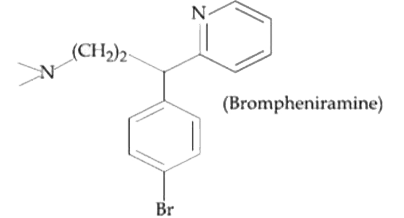Which of the following molecules acts as a Lewis acid?
(a) (CH3)3B
(b) (CH3)2O
(c) (CH3)3P
(d) (CH3)3N
The correct Answer is:A
To determine which of the given molecules acts as a Lewis acid, we need to identify which molecule is electron deficient and can accept a pair of electrons. Here’s the step-by-step solution:
Step 1: Understand the Definition of Lewis Acid
A Lewis acid is defined as a species that can accept a pair of electrons from a donor atom. This means that Lewis acids are typically electron deficient.
Step 2: Analyze Each Option
We have four options to analyze:
1. Option A: CH3 thrice B (Boron)
2. Option B: CH3 twice O (Oxygen)
3. Option C: CH3 thrice P (Phosphorus)
4. Option D: CH3 thrice N (Nitrogen)
Step 3: Evaluate Option A (CH3 thrice B)
- Central Atom: Boron (B)
- Atomic Number: 5
- Electron Configuration: 1s² 2s² 2p¹
- Bonding: Boron forms three covalent bonds with three CH3 groups.
- Electron Count: After bonding, Boron has 6 electrons in its valence shell but has one vacant 2p orbital.
- Conclusion: Boron is electron deficient and can accept a pair of electrons, making it a Lewis acid.
Step 4: Evaluate Option B (CH3 twice O)
- Central Atom: Oxygen (O)
- Atomic Number: 8
- Electron Configuration: 1s² 2s² 2p⁴
- Bonding: Oxygen forms two bonds with two CH3 groups and has two lone pairs.
- Electron Count: The octet of oxygen is complete (8 electrons).
- Conclusion: Oxygen is not electron deficient and does not act as a Lewis acid.
Step 5: Evaluate Option C (CH3 thrice P)
- Central Atom: Phosphorus (P)
- Atomic Number: 15
- Electron Configuration: 1s² 2s² 2p⁶ 3s² 3p³
- Bonding: Phosphorus forms three bonds with three CH3 groups and has one lone pair.
- Electron Count: The octet of phosphorus is complete.
- Conclusion: Phosphorus is not electron deficient and does not act as a Lewis acid.
Step 6: Evaluate Option D (CH3 thrice N)
- Central Atom: Nitrogen (N)
- Atomic Number: 7
- Electron Configuration: 1s² 2s² 2p³
- Bonding: Nitrogen forms three bonds with three CH3 groups and has one lone pair.
- Electron Count: The octet of nitrogen is complete.
- Conclusion: Nitrogen is not electron deficient and does not act as a Lewis acid.
Final Conclusion
After analyzing all options, the only molecule that acts as a Lewis acid is Option A: CH3 thrice B.
Summary of the Answer
The molecule that acts as a Lewis acid is CH3 thrice B (Boron).
---
A Lewis acid is defined as a species that can accept a pair of electrons from a donor atom. This means that Lewis acids are typically electron deficient.
We have four options to analyze:
1. Option A: CH3 thrice B (Boron)
2. Option B: CH3 twice O (Oxygen)
3. Option C: CH3 thrice P (Phosphorus)
4. Option D: CH3 thrice N (Nitrogen)
- Central Atom: Boron (B)
- Atomic Number: 5
- Electron Configuration: 1s² 2s² 2p¹
- Bonding: Boron forms three covalent bonds with three CH3 groups.
- Electron Count: After bonding, Boron has 6 electrons in its valence shell but has one vacant 2p orbital.
- Conclusion: Boron is electron deficient and can accept a pair of electrons, making it a Lewis acid.
- Central Atom: Oxygen (O)
- Atomic Number: 8
- Electron Configuration: 1s² 2s² 2p⁴
- Bonding: Oxygen forms two bonds with two CH3 groups and has two lone pairs.
- Electron Count: The octet of oxygen is complete (8 electrons).
- Conclusion: Oxygen is not electron deficient and does not act as a Lewis acid.
- Central Atom: Phosphorus (P)
- Atomic Number: 15
- Electron Configuration: 1s² 2s² 2p⁶ 3s² 3p³
- Bonding: Phosphorus forms three bonds with three CH3 groups and has one lone pair.
- Electron Count: The octet of phosphorus is complete.
- Conclusion: Phosphorus is not electron deficient and does not act as a Lewis acid.
- Central Atom: Nitrogen (N)
- Atomic Number: 7
- Electron Configuration: 1s² 2s² 2p³
- Bonding: Nitrogen forms three bonds with three CH3 groups and has one lone pair.
- Electron Count: The octet of nitrogen is complete.
- Conclusion: Nitrogen is not electron deficient and does not act as a Lewis acid.
After analyzing all options, the only molecule that acts as a Lewis acid is Option A: CH3 thrice B.
The molecule that acts as a Lewis acid is CH3 thrice B (Boron).
Similar Questions
Knowledge Check
- Question 1 - Select One
Which of the following molecules can act as a nucleophile and an electrophile ?
ACH3NH2BCH3ClCCH3CNDCH3OH - Question 2 - Select One
Electron deficient species are known as electrophiles. All positively charged species are not electrophilic. Covalent compounds having complete octet but if central atom has unfilled d-orbital also act as electrophiles. All electrophiles are not always Lewis acid.
Which of the following electrophile is not Lewis acid?ABCl3BBeCl2C.CH3D..C..H2
Which of the following molecule can show Lewis acidity?
(I) CO2
(II) Br2
(III) SnCl2
(IV) HF
View SolutionWhich of the following molecular hydrises acts as a Lewis acid?
View SolutionWhich of the following molecules can act as an oxidising agent as well as a reducing agent ?
View SolutionWhich one of the following molecules hydrides acts as a Lewis acid ?
View SolutionAny species capable of accepting a lone pair of electrons acts as a lewis acid, where as a species capable of donating a proton acts as a Bronstead acid.
Which of the following can act as a lewis acid as well as a lewis base ?View SolutionWhich of the following example behave as a lewis acid BF3,SnCl2,SnCl4 :
View Solution


